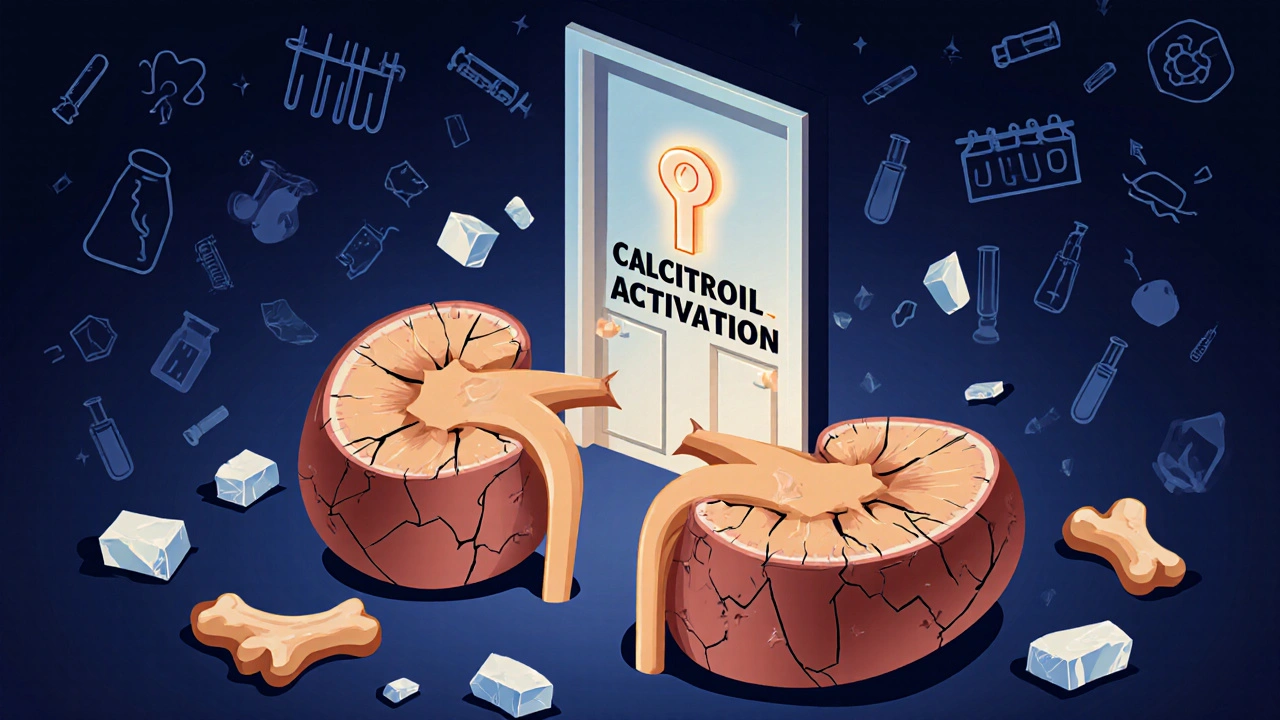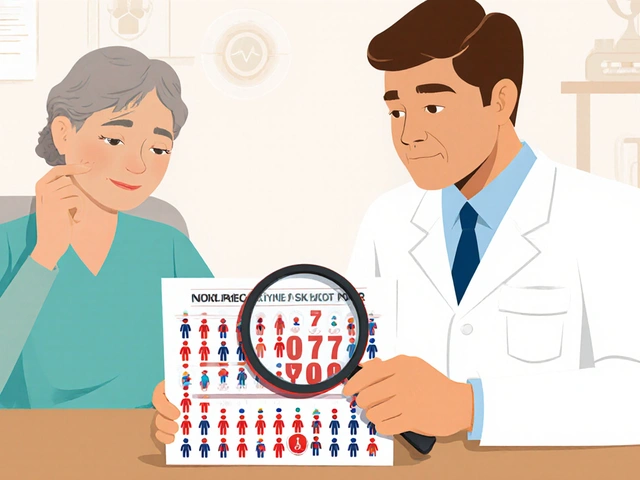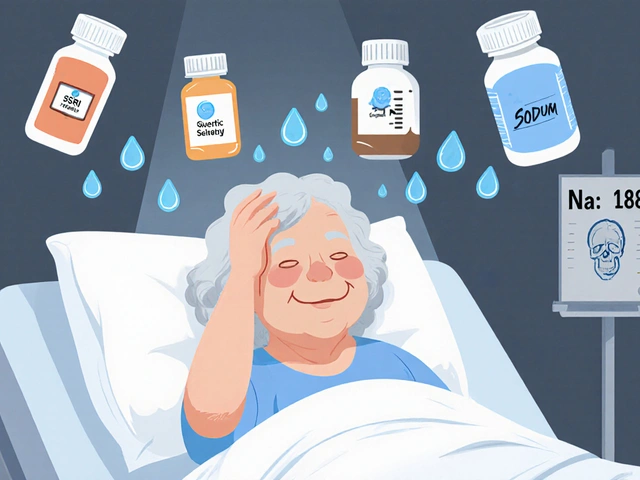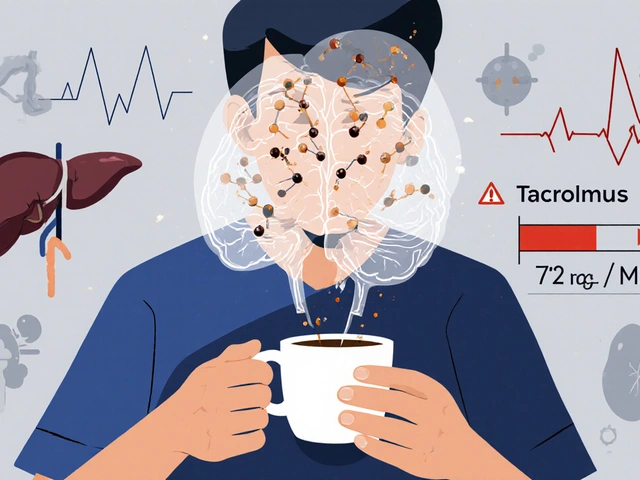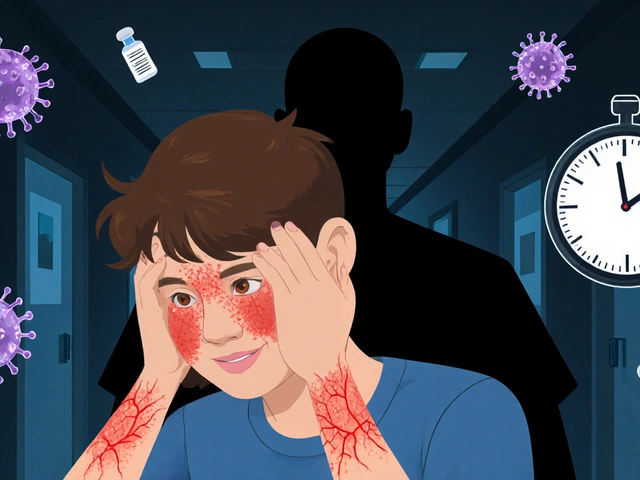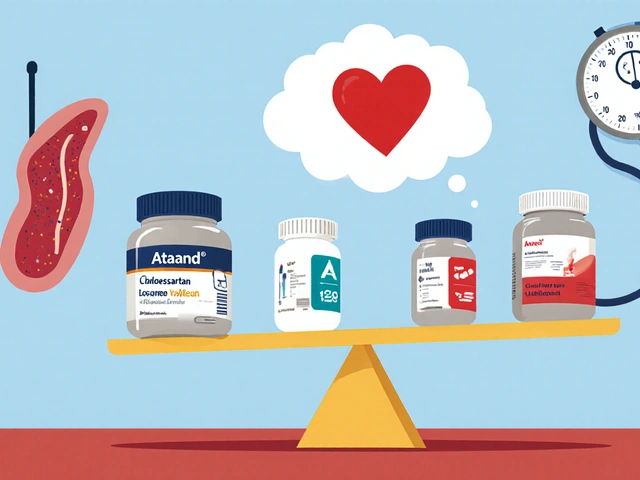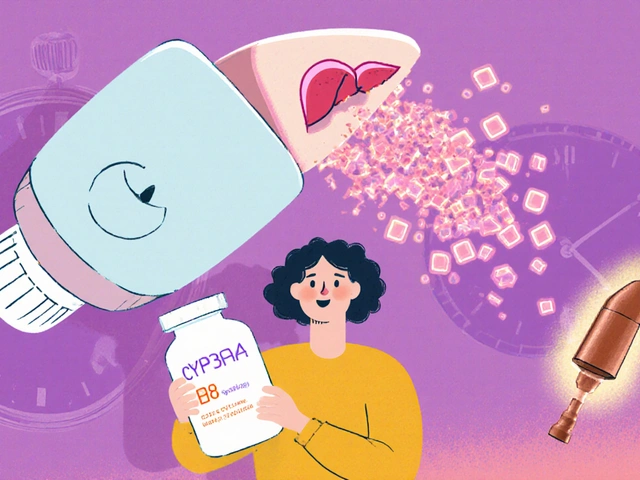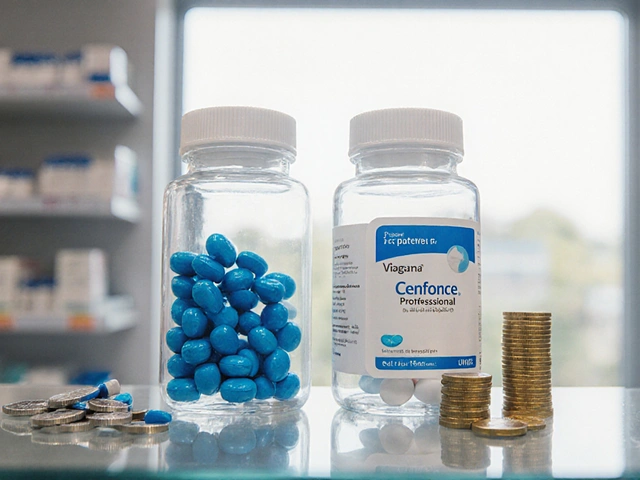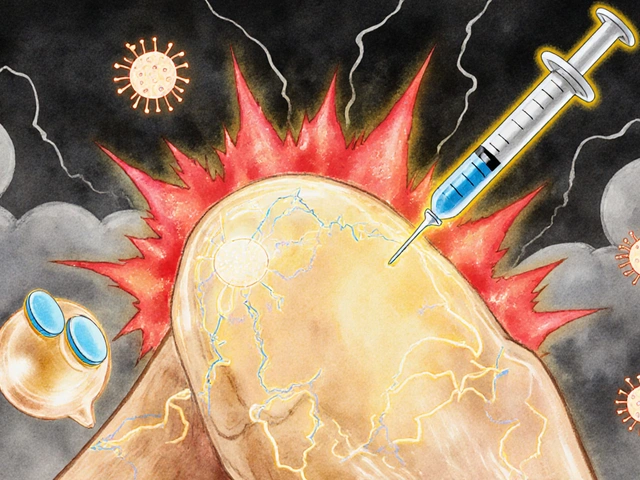When your kidneys start to fail, they don’t just stop filtering waste-they also stop making the active form of vitamin D your body needs to keep bones strong and calcium balanced. That’s where alfacalcidol comes in. It’s not a cure, but for millions with chronic kidney disease (CKD), it’s a critical tool to prevent bone fractures, reduce muscle weakness, and avoid dangerous calcium imbalances. Unlike regular vitamin D supplements, alfacalcidol works without needing healthy kidneys to activate it. That’s the key difference.
Why Chronic Kidney Disease Breaks Vitamin D Processing
Your body turns vitamin D from food or sunlight into calcitriol-the active hormone that tells your intestines to absorb calcium and your bones to release or store it as needed. Healthy kidneys do this final step. But when CKD hits stage 3 or worse, the kidneys lose most of their ability to convert vitamin D into calcitriol. Without it, calcium levels drop. Parathyroid glands go into overdrive, pulling calcium out of bones. Over time, bones become thin, brittle, and prone to breaking. This is called renal osteodystrophy.
Low vitamin D also raises parathyroid hormone (PTH) levels, which can cause itching, heart problems, and even calcification of blood vessels. That’s why doctors don’t just check calcium levels in CKD patients-they check PTH and vitamin D markers too. Alfacalcidol skips the broken step. It’s already partially activated, so your liver can turn it into calcitriol even if your kidneys can’t.
How Alfacalcidol Works Differently Than Regular Vitamin D
Regular vitamin D supplements (like D2 or D3) need two activation steps: first in the liver, then in the kidneys. In CKD, the second step fails. Alfacalcidol (also called 1-alpha-hydroxyvitamin D3) is already hydroxylated at the first position. That means it only needs one more step-in the liver-to become active calcitriol. Your liver doesn’t shut down with kidney failure, so this works.
Compared to calcitriol (the fully active form), alfacalcidol has a longer half-life and a gentler effect on calcium levels. That makes it easier to dose safely. Studies from the National Kidney Foundation show that patients on alfacalcidol had 30% lower PTH levels after six months compared to those taking plain vitamin D. Bone density improved too, especially in older adults with stage 4 CKD.
Who Gets Prescribed Alfacalcidol
Not every CKD patient needs it. Doctors usually start considering alfacalcidol when:
- Parathyroid hormone (PTH) stays above 300 pg/mL for 3+ months
- Calcium levels are low or borderline (below 8.5 mg/dL)
- Phosphorus is high (above 5.5 mg/dL)
- There’s evidence of bone pain, fractures, or X-ray changes
It’s most common in stage 3b-5 CKD, especially in people over 60. Diabetics and those on dialysis are also frequent candidates. But it’s not for everyone. If your calcium is already high, or you have a history of kidney stones, alfacalcidol can make things worse.
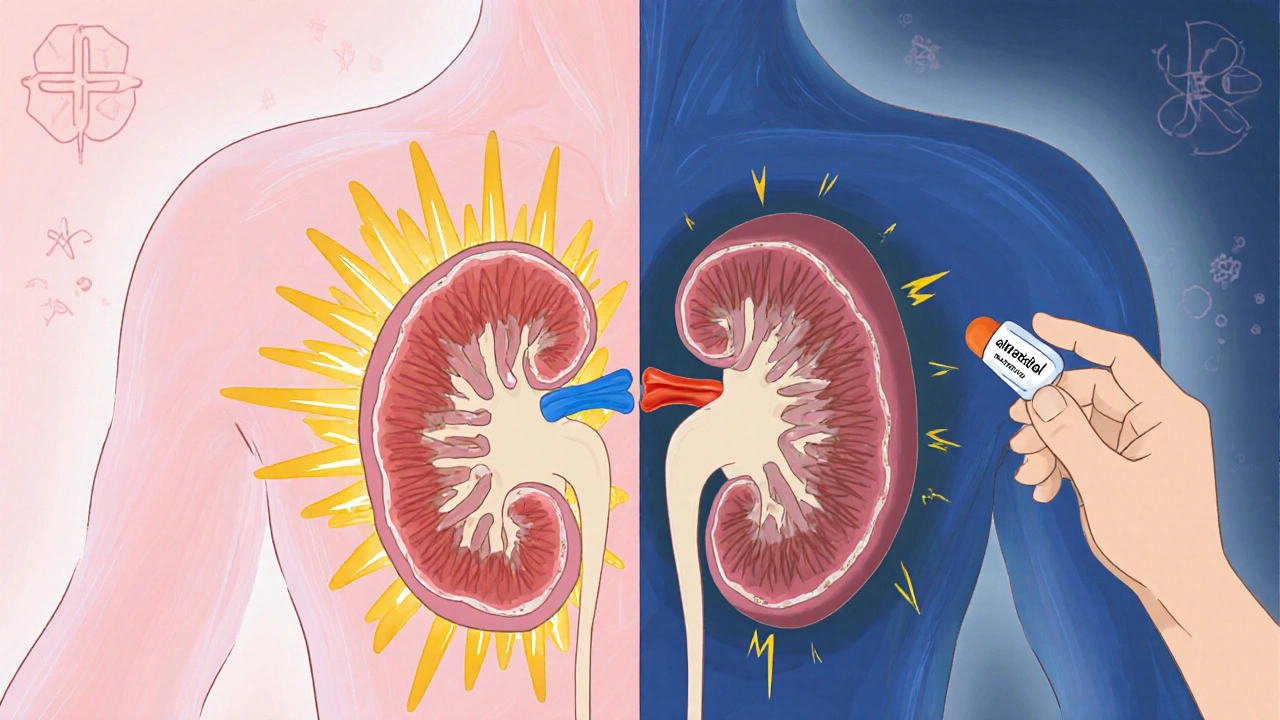
Dosing and How to Take It Safely
There’s no one-size-fits-all dose. It starts low-usually 0.25 mcg per day-and is adjusted based on blood tests every 4-8 weeks. Some patients need 0.5 mcg, others 1 mcg. The goal isn’t to normalize calcium or phosphorus overnight. It’s to bring PTH down slowly, without causing spikes in calcium.
You take it with food, usually in the morning. Don’t skip doses. Missing one won’t hurt, but missing several can cause PTH to rebound. Never double up if you forget. Always check with your doctor.
Side effects are rare but serious if ignored. Too much alfacalcidol can raise calcium too high-leading to nausea, confusion, frequent urination, or even heart rhythm problems. That’s why regular blood tests are non-negotiable. Most patients on stable doses get labs every 3 months. If calcium goes above 10.2 mg/dL, your dose gets lowered or paused.
What Happens If You Stop Taking It
Stopping alfacalcidol doesn’t just mean your bones will weaken. Your PTH will climb again, often faster than before. Within 6-12 weeks, many patients see PTH levels double. Bone turnover increases. Fracture risk rises. Some people develop calciphylaxis-a rare but deadly condition where calcium builds up in small blood vessels, causing skin ulcers and tissue death.
That’s why doctors rarely stop alfacalcidol unless calcium is dangerously high. Even then, they don’t just turn it off. They lower the dose gradually and monitor closely. If you’re on dialysis, you’ll likely stay on it long-term. It’s not optional-it’s part of your survival toolkit.
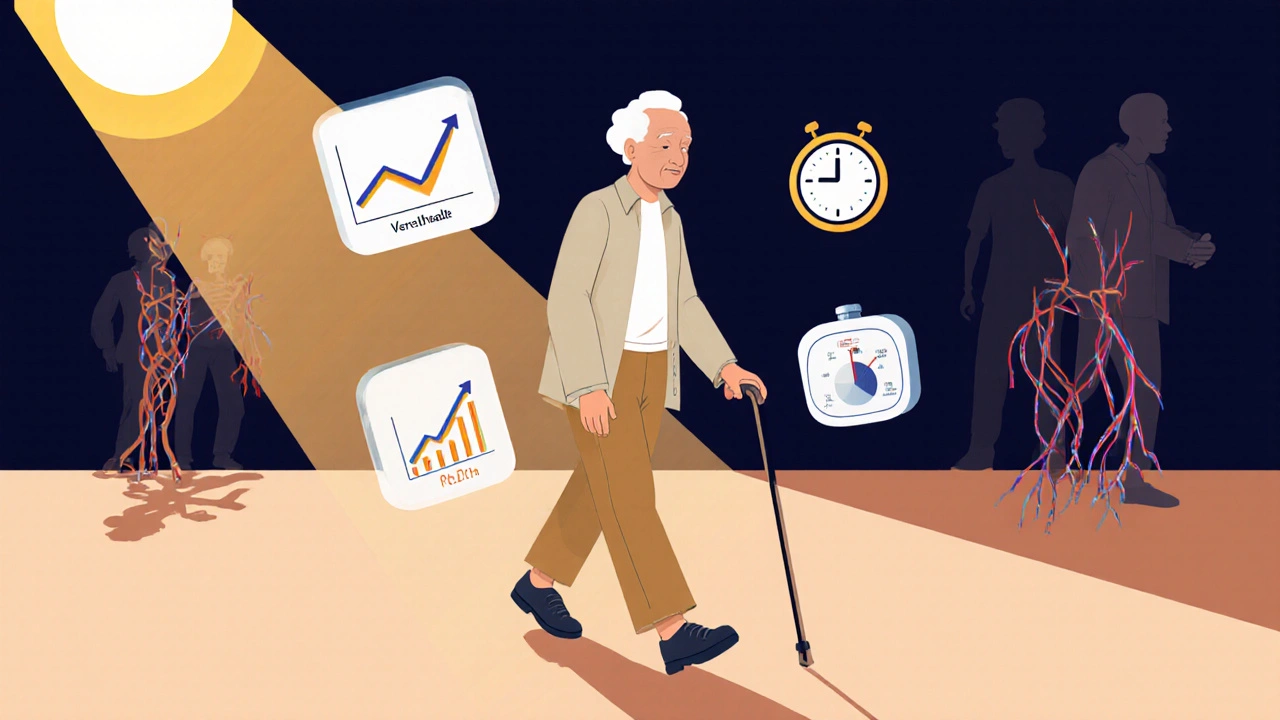
Alternatives to Alfacalcidol
There are other options, but none are perfect. Calcitriol is the fully active form and works faster-but it’s harder to control. Small changes in dose can cause dangerous calcium spikes. Paricalcitol and doxercalciferol are newer vitamin D analogs. They’re more selective, meaning they lower PTH without raising calcium as much. But they’re also more expensive and not always covered by insurance.
Some patients try high-dose vitamin D3, but studies show it doesn’t work well in advanced CKD. The kidneys just can’t convert it. Calcium binders like sevelamer or lanthanum help control phosphorus, but they don’t fix the vitamin D problem. Alfacalcidol remains the most widely used because it’s effective, affordable, and predictable.
What Patients Say About Alfacalcidol
Real-world feedback from CKD patients shows mixed experiences. Many report less bone pain and stronger legs after a few months. One 68-year-old man on dialysis said he went from needing a cane to walking without support in 5 months. Another woman, 72, stopped having nighttime leg cramps.
But others struggle with side effects. A 55-year-old woman developed constipation and fatigue after her dose was increased. Her doctor lowered it, and symptoms went away. The key is communication. If something feels off-fatigue, dry mouth, frequent urination-tell your nephrologist. Don’t wait for your next blood test.
Living With Alfacalcidol: Practical Tips
- Keep a log: Note your dose, any symptoms, and when you had blood work.
- Don’t take calcium supplements unless your doctor says so. Alfacalcidol already boosts calcium absorption.
- Limit phosphorus-rich foods: processed meats, colas, cheese, and instant oatmeal.
- Get sunlight, but don’t overdo it. Your body can’t make vitamin D well anyway, but sunlight helps mood and sleep.
- Set phone reminders. Missing doses is a common reason treatment fails.
Many patients feel better within weeks. But the real benefit shows up over years-fewer fractures, less hospitalization, better quality of life. It’s not glamorous. But for people with advanced kidney disease, it’s one of the few things that actually helps them live longer and feel stronger.
Is alfacalcidol the same as vitamin D3?
No. Vitamin D3 (cholecalciferol) needs to be converted by the liver and kidneys to become active. In chronic kidney disease, the kidneys can’t do this step. Alfacalcidol is already partially activated, so it only needs liver processing. That’s why it works when regular vitamin D doesn’t.
Can I take alfacalcidol without a prescription?
No. Alfacalcidol is a prescription medication. It’s not available over the counter because it can cause dangerous calcium imbalances if misused. Even though it’s a vitamin D analog, it acts like a hormone and requires careful monitoring.
How long does it take for alfacalcidol to work?
You might feel less bone pain or muscle cramps within 2-4 weeks. But the real test is your blood work. PTH levels usually drop significantly after 6-12 weeks. Doctors wait until then to adjust your dose. Don’t expect instant results-it’s a slow, steady process.
Does alfacalcidol cause weight gain?
No, alfacalcidol itself doesn’t cause weight gain. But if it raises your calcium too high, you might feel less hungry or get nauseated, which could lead to weight loss. Some patients gain weight because improved energy and reduced pain let them eat more or move more. Any weight change should be discussed with your doctor.
Can alfacalcidol damage my kidneys?
No, alfacalcidol doesn’t damage kidneys. In fact, by lowering high PTH levels, it helps protect them. High PTH causes inflammation and scarring in kidney tissue. But if alfacalcidol causes calcium to rise too high, it can lead to calcium deposits in soft tissues-including the kidneys. That’s why regular blood tests are essential.
